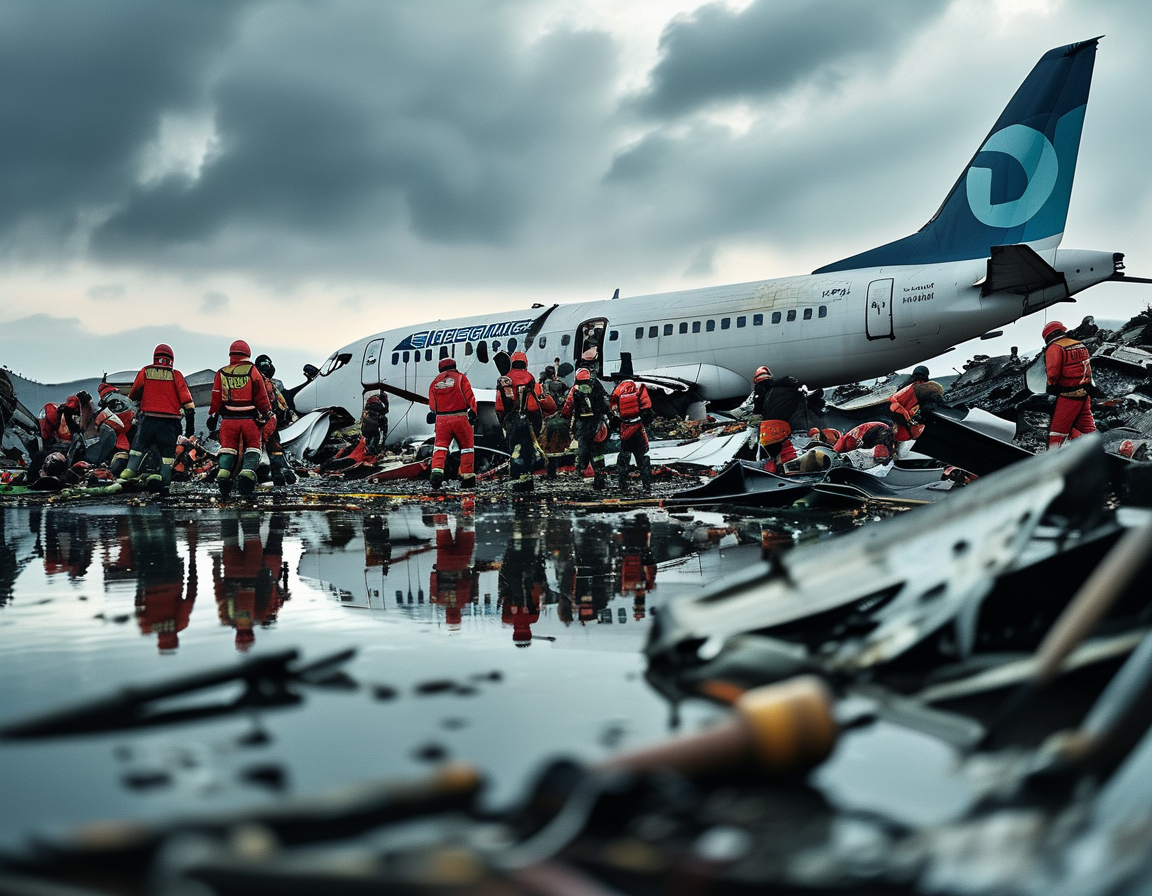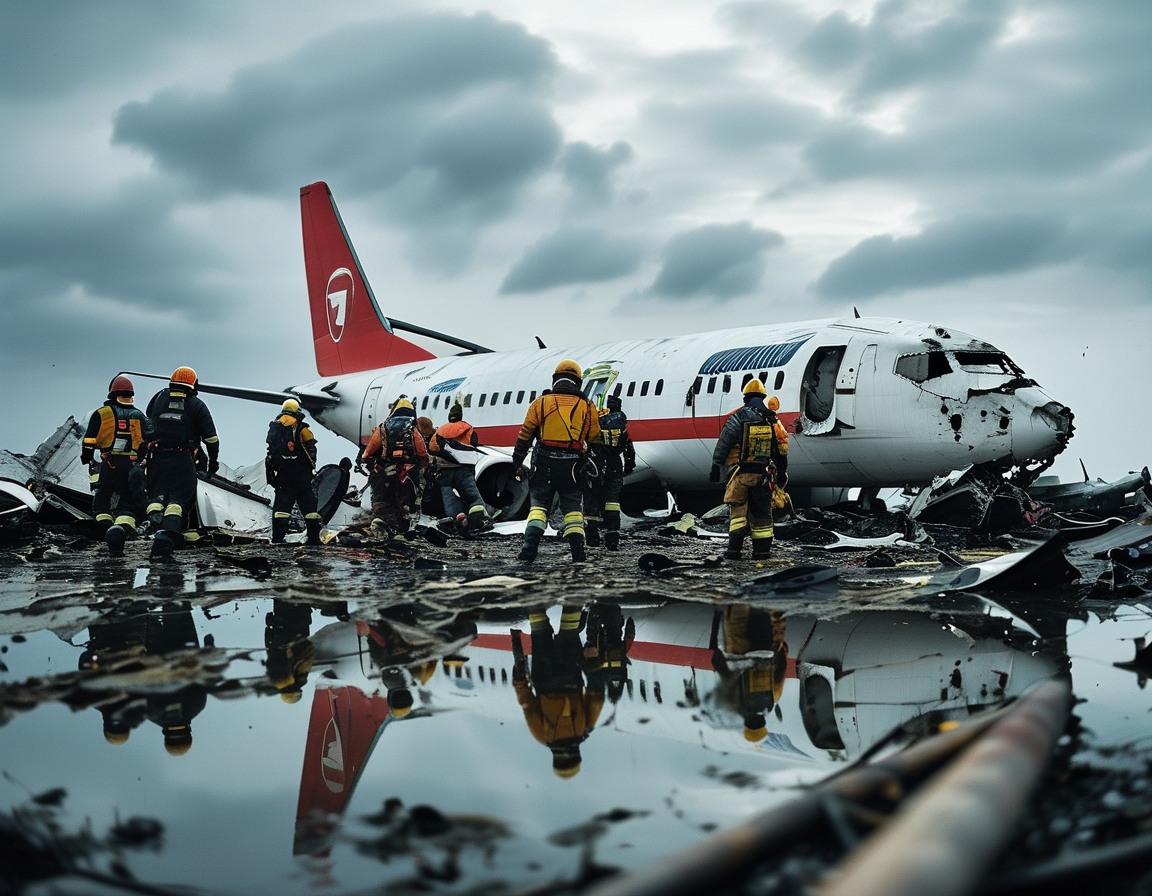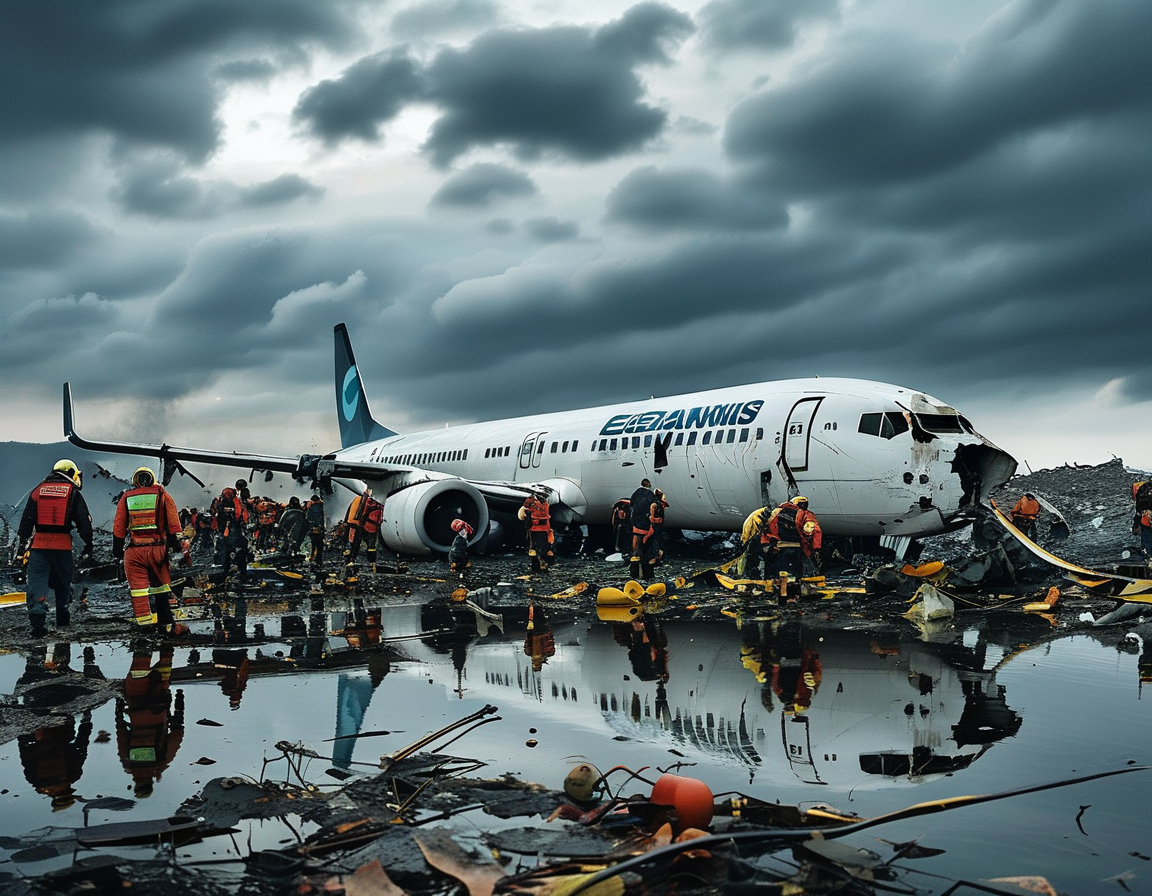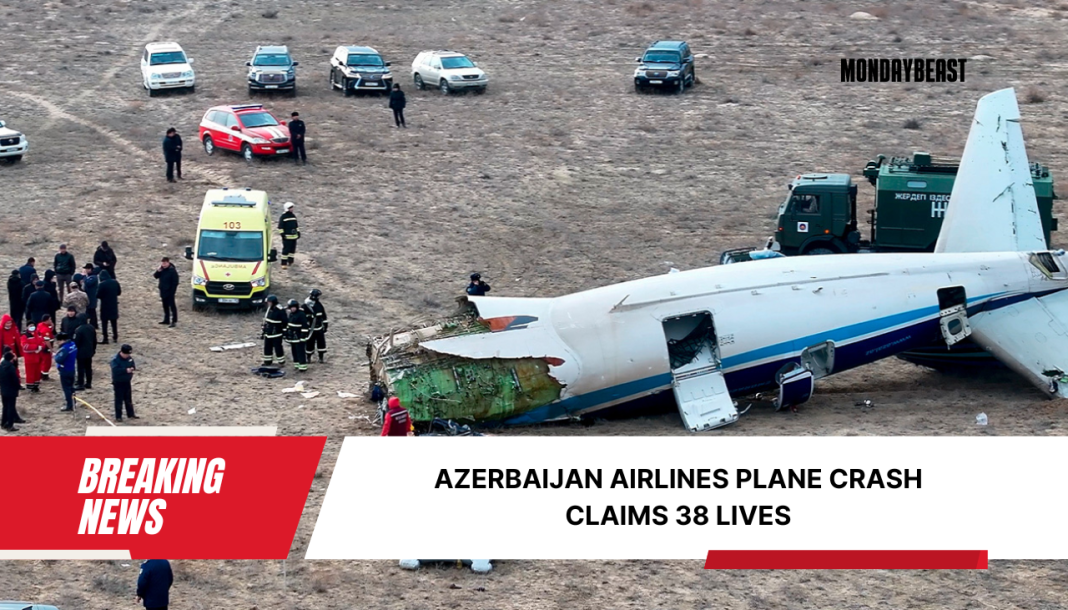A recent tragedy has left the world in shock. A passenger plane from Azerbaijan Airlines crashed near Kazakhstan’s Aktau Airport, killing at least 38 people. What were the circumstances of this catastrophic event? How can we make sense of such tragedy?

The aircraft, which was en route from Baku to Grozny, was rerouted. Dense fog in Grozny forced a change in plans. Reports indicated that it was during this diversion that disaster struck. The plane faced trouble shortly after landing near the Caspian Sea. Can you imagine those final moments?
Among the 69 individuals on board, 64 were passengers. The flight was tragic; a scene straight from a nightmare unfolded. Emergency response teams quickly sprang into action. Rescue workers rushed to the site, carrying supplies, medical gear, and hope. Yet, despite their efforts, 29 people survived, but many remained in critical condition.

Kazakhstan’s Ministry of Emergency Situations was actively involved. They reported the grim numbers, stating the dead and injured are still being confirmed. Efforts were made to provide immediate medical attention. Two children were among the injured. How do parents cope with such losses? Can healing even begin?
Preliminary investigations suggest a bird strike was a key factor. Imagine the confusion when the plane hit trouble. It seems unfathomable but, in aviation, this is a rare occurrence. A strike leading to engine failure raises concerns about safety in air travel. What can be done to ensure such incidents are prevented in the future?

Kazakhstan’s authorities are not alone in this investigation. Azerbaijan and Russia also join forces. They work together to uncover the exact cause of this tragic event. Investigators are examining each detail meticulously. What lessons can we learn from such cooperation?
Meanwhile, Azerbaijan’s President Ilham Aliyev canceled a planned meeting in St. Petersburg. His heart clearly weighed down by the tragedy. Private moments shared between leaders conveyed deep condolences. How often do we let personal connections fall aside in the wake of public responsibilities?
Both President Aliyev and President Putin expressed their sorrow. They acknowledged the vast implications of this crash. Citizens from multiple countries were onboard. The tragedy felt global, not just a local incident. How can we cultivate compassion in the face of such disasters?
As the investigation unfolds, families await answers. Questions linger in the air, as heavy as the fog that rerouted the flight. We must hold onto those questions, seeking understanding and closure. What must be done to honor those lost? What steps can we take to promote safer skies?
This event is a stark reminder of the fragility of life. We often take our travels for granted. The unexpected can strike at any moment. It is our responsibility to cultivate awareness, empathy, and resilience in the face of tragedy. How do we pay tribute? How do we ensure such loss is not in vain?




